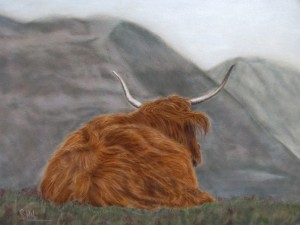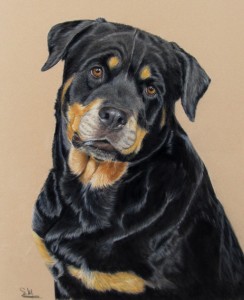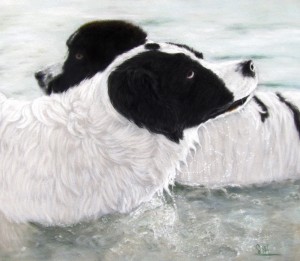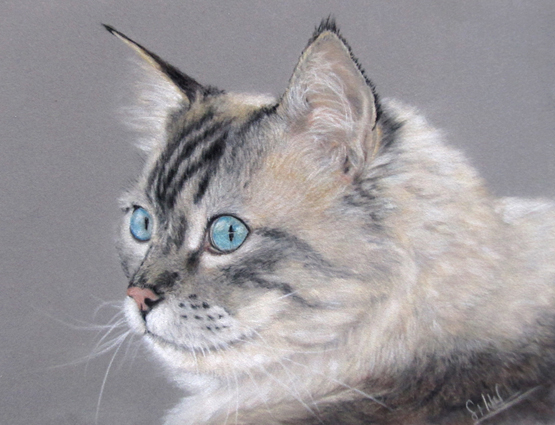Simone Hofmann
There are hundreds of pastel colors in different degrees of hardness, and in a variety of colors and shades available, depending on the manufacturer. This opens up a potential that allows the presentation of complex and highly detailed designs. The key to a successful pastel painting is the deliberate application of multiple layers of paint, as well as creating highlights to give the subjects a natural look.
available, depending on the manufacturer. This opens up a potential that allows the presentation of complex and highly detailed designs. The key to a successful pastel painting is the deliberate application of multiple layers of paint, as well as creating highlights to give the subjects a natural look.
The requirements of the paper are based to the possibilities pastel colors enable: The papers should allow the absorption of at least three to six layers of paint, editing by wiping or rubbing and avoid a final fixation.
Therefore, surfaces for pastel painting are textured or coated to ensure a stable adhesion of fine pastels.
I have chosen Hahnemühle Velour as it meets the scrupulous requirements necessary as well as my personal demands. For animal portrait painting I value a realistic representation of my motifs, which comes with the wealth of detail on the one hand and a gentle overall impression on the other.
hand and a gentle overall impression on the other.
Hahnemühle Velour initially acts highly sensitive, which is underscored by the noble-looking feel. In practice; however, it proves quite responsive and extremely stable. The velvety surface of the heavy 260 gsm paper carries six to eight layers of pastel. That’s more than enough to give soft and hard pastels space to fully express their meaning.
Working on Hahnemühle Velour requires a little practice, as blurring after applying the first layer is hardly possible as the image needs delicate gradients and overlays to become vivid. However, after patiently applying further layers and with a few tools and training you will be rewarded with an excellent result. For example, I use pastel brushes or Colour Shaper on Hahnemühle Velour paper to make gradients. Final accents such as tiny hairs or lights can still be easily applied with hard or soft pastels.

The initial challenges of using Hahnemühle Velour will be appreciated upon completion of your painting,, as the pastels adhere so tenaciously to the surface that the image is almost smudge-proof. I usually rub with my hand over the final image to remove excess pastel dust. I’ve never needed a final fixation with this paper.
Pastel painting on Hahnemühle Velour differs in many ways from working with other pastel papers. Anyone willing to take the time for new techniques and invest in high-quality pastels will enjoy successful paintings!
Read more about Simones work of art on her website or watch following step-by-step video clip.








